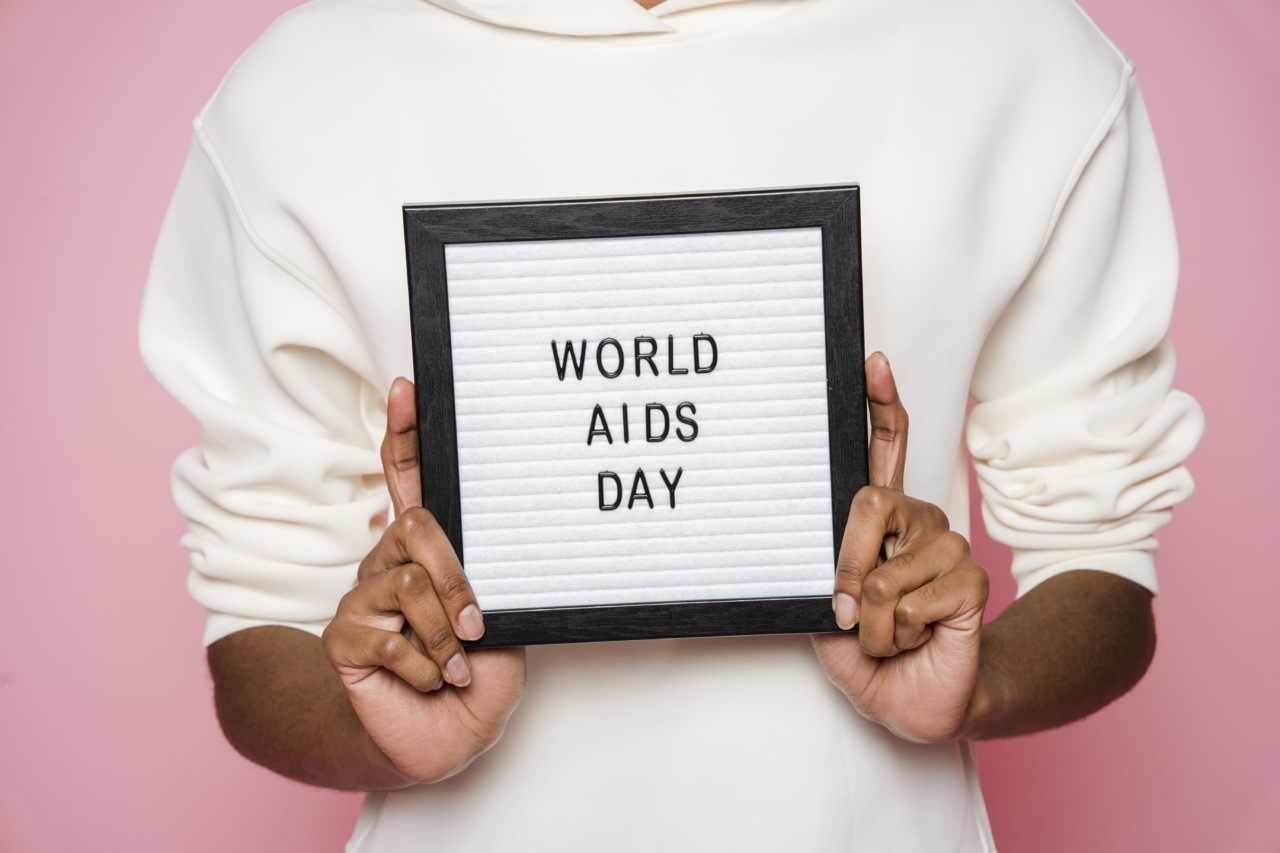AIDS (Acquired Immune Deficiency Syndrome) is one of the deadliest diseases in the world. According to the World Health Organization (WHO), there were 38 million people living with HIV at the end of 2019.
The majority of these people are young, with people aged between 15-24 accounting for around 1.8 million of the new HIV infections in 2019. Despite the alarming numbers, young people lack awareness about the transmission of AIDS, which is a major challenge in the fight against the disease.
The Importance of Awareness about AIDS Transmission
The lack of awareness about the transmission of AIDS is a worrying trend among young people. HIV is spread through the sexual contact, sharing of needles, and blood-to-blood contact.
However, most young people do not know the ways in which HIV can be transmitted.
The lack of awareness about AIDS transmission has led to a rise in the number of new infections among young people.
According to the Centers for Disease Control and Prevention (CDC), young people aged between 13-24 accounted for 21% of new HIV diagnoses in 2018. This shows that young people are at a high risk of contracting HIV due to their lack of knowledge about the transmission of the disease.
The Role of Education in Raising Awareness about AIDS Transmission
Education plays a key role in raising awareness about the transmission of AIDS. Young people should be provided with accurate information about the ways in which HIV can be transmitted.
Sex education in schools should include information about the transmission of HIV to ensure that young people are aware of the risks associated with unprotected sexual contact.
However, education alone is not enough. There is a need for campaigns that are specifically targeted at young people to raise awareness about the transmission of HIV.
These campaigns can use social media platforms to reach a wider audience and can be designed to be interactive and engaging to capture the attention of young people.
The Impact of Stigma on AIDS Awareness among Young People
Stigma is another challenge that affects AIDS awareness among young people. There is a stigma associated with HIV that makes it difficult for young people to talk openly about the disease.
This stigma is often perpetuated by the media, which portrays people living with HIV in a negative light.
The impact of stigma on AIDS awareness is evident in the number of young people who are reluctant to get tested for HIV. According to the CDC, only 10% of young people have ever been tested for HIV.
Stigma and fear of discrimination are the main reasons why young people do not get tested.
The Need for HIV Testing among Young People
HIV testing is essential in the fight against the disease. It is the only way to know for sure whether someone has been infected with HIV or not.
It is particularly important for young people to get tested since they are at a high risk of contracting the disease.
Unfortunately, most young people do not get tested due to stigma and fear of discrimination. There is a need for campaigns that are specifically targeted at young people to encourage them to get tested for HIV.
These campaigns should provide information about the importance of getting tested and address the stigma associated with the disease.
The Role of Society in Raising Awareness about AIDS Transmission among Young People
The transmission of AIDS among young people is not just a problem for young people, but it is a problem for society as a whole. It is, therefore, important for society to play an active role in raising awareness about the disease.
Society can raise awareness about AIDS transmission among young people by providing education and information about the disease.
This can include information about the ways in which HIV can be transmitted, the importance of getting tested, and the available treatments for HIV.
In addition, society can reduce the stigma associated with HIV by promoting a culture of acceptance and compassion towards people living with the disease.
This can be done through media campaigns that promote positive images of people living with HIV and public education programs that focus on reducing stigma and discrimination.
The Importance of Getting Treatment for HIV
Getting treatment for HIV is crucial for people living with the disease. HIV is no longer a death sentence, and people living with HIV can lead long and healthy lives with the right treatment.
The available treatments for HIV are highly effective and can reduce the amount of virus in the bloodstream to undetectable levels.
It is, therefore, important for young people who are living with HIV to get treatment. This can be done by getting tested for HIV regularly and seeking medical advice if they test positive for HIV.
Treatment for HIV is also important in preventing the transmission of the disease to others.
The Way Forward: How to Raise Awareness about the Transmission of AIDS among Young People
Raising awareness about the transmission of AIDS among young people is critical in the fight against the disease. It is, therefore, important to adopt a multi-faceted approach to tackle the problem.
The following strategies can be used to raise awareness about the transmission of AIDS among young people:.
: 1. Education
Education is the most important strategy for raising awareness about the transmission of AIDS among young people. Sex education in schools should include information about the ways in which HIV can be transmitted.
The education should also cover the importance of testing and treatment for HIV to reduce the spread of the disease.
: 2. Information
Young people should be provided with accurate information about the disease and the ways in which it can be transmitted.
This information can be provided through social media platforms, television, and other media outlets that are popular among young people.
: 3. Campaigns
Campaigns that are specifically targeted at young people can be designed to raise awareness about the transmission of AIDS.
These campaigns can use social media platforms to reach a wider audience and can be designed to be interactive and engaging to capture the attention of young people.
: 4. Testing
It is important for young people to get tested for HIV regularly. There is a need for campaigns that are specifically targeted at young people to encourage them to get tested for HIV.
These campaigns should provide information about the importance of getting tested and address the stigma associated with the disease.
: 5. Treatment
Getting treatment for HIV is crucial for people living with the disease. It is, therefore, important for young people who are living with HIV to get treatment.
This can be done by getting tested for HIV regularly and seeking medical advice if they test positive for HIV.
Conclusion
Young people lack awareness about the transmission of AIDS, which is a major challenge in the fight against the disease. Educating young people about the ways in which HIV can be transmitted is crucial in reducing the spread of the disease.
There is a need for campaigns that are specifically targeted at young people to raise awareness about the transmission of AIDS. Testing and treatment for HIV are also crucial in the fight against the disease. It is, therefore, important for society as a whole to play an active role in raising awareness about the transmission of AIDS among young people.


























